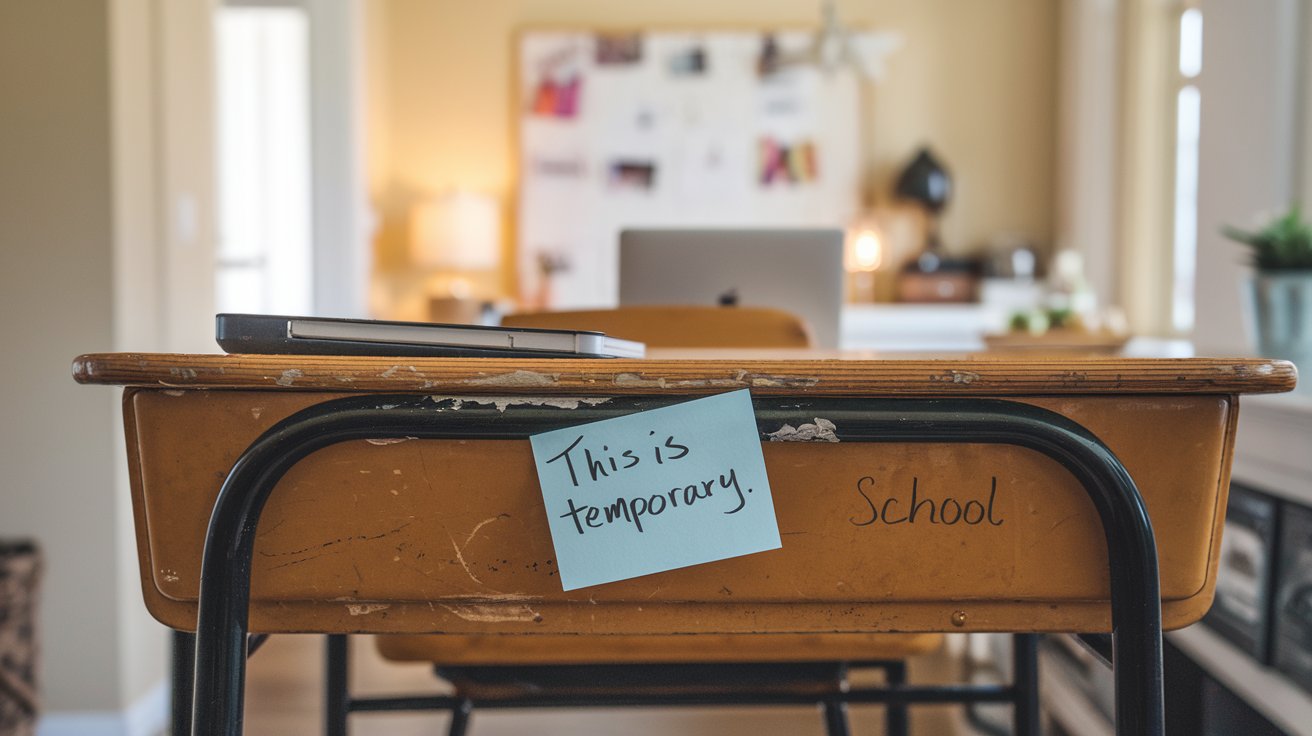Your cart is currently empty!

Mindfulness: Your Path to Inner Peace and Wellness
Discover the transformative power of Mindfulness – learn practical techniques to reduce stress, enhance focus, and cultivate lasting peace in your daily life.
This post may contain affiliate links. At no cost to you, I may earn a small commission if you click on any affiliate link within my blog. Some of the content on this website was created with the help of AI.
In a world where phones buzz non-stop, there’s constant notifications and life feels like one endless to-do list, finding inner peace can seem impossible. But mindfulness, a simple, ancient practice, offers a way out.
Research shows that people who practice mindfulness feel less stressed. It helps with anxiety and depression, improving mental health.
But there’s more. It boosts focus and concentration and helps manage emotions.
I have proven to myself that by slowing down and living in the present, I have been able to reduce stress, and find the moments of calm that I am often craving.
So, what makes mindfulness so powerful? How can it change your life?
What is Mindfulness, and Where Does it Come From?
Mindfulness has its roots in Buddhist meditation but has become a practical tool for modern life. It’s about paying full attention to the present moment without judgment.
It is simple, but transformative and is:
Accessible to everyone: You don’t need hours of free time or special tools. Mindfulness is for anyone who wants to live more intentionally and feel more at peace.
An ancient wisdom made modern: Jon Kabat-Zinn brought mindfulness to the West, defining it as “awareness that arises through paying attention, on purpose, in the present moment, non-judgmentally.”
Living in the now: Being mindful is about observing or noticing what’s happening, your thoughts, emotions, or surroundings, without trying to change anything or getting distracted.
The Science Behind Present Moment Awareness
Mindfulness is a calming practice and is a scientifically backed approach to improving mental well-being. By focusing on the present moment, it rewires the brain, helping us manage emotions, reduce stress, and enhance focus. Studies show that regular practice can have profound effects on both mental and physical health.
- Less stress and anxiety: Regular mindfulness practice lowers cortisol (your stress hormone), leaving you feeling calmer and more in control.
- Emotional balance: By observing your emotions without reacting, you can respond with clarity instead of being swept away by them.
- Boosts mental clarity and focus: By training the mind to stay present, mindfulness enhances concentration and decision-making.

Core Principles of Mindful Living
At its heart, mindfulness is built on a few key ideas that guide you toward a calmer, more intentional life.
- Non-judgmental awareness: Notice your thoughts, feelings, and surroundings without labeling them. Just observe.
- Acceptance: Embrace the present moment as it is whether it be messy, imperfect, or beautiful, without trying to change it.
- Self-compassion: Be kind to yourself, even when you stumble. Treat yourself the way you would a dear friend.
By following these principles, being mindful has helped me deal with daily stress triggers. They have helped me slow down, gain perspective, and feel grounded when my life gets chaotic.

The Transformative Benefits of Mindful Practice
Embracing mindfulness can change us deeply. And the benefits touch every part of your well-being.
- Mental health: Reduces anxiety, stress, and depression while improving focus and emotional resilience. It helps us feel more balanced and calm. Studies show that being kind to ourselves helps us stay mentally well.
- Physical wellness: Lowers blood pressure, improves sleep, and helps your body recover from the wear and tear of stress. It makes us feel more relaxed and strong.
- Stronger relationships: It helps us understand ourselves and others better. By being fully present, you communicate better, listen more deeply, and strengthen your connections.

Simple Mindfulness Techniques for Daily Life
One things I’ve come to realise is that you don’t need a silent retreat to practice mindfulness. Here are three FREE simple techniques I use that fit easily into my busy schedule as a teacher. Maybe you too can weave them into your day:
- Mindful breathing:
- Sit comfortably, close your eyes, and take slow, deep breaths.
- Focus on the feeling of the air moving in and out of your body.
- When your mind wanders (and it will), gently bring your attention back to your breath.
- Often underrated, I believe mindful breathing is a game changer and there are plenty of mindful breathing books to back this up.
- Body scan meditation:
- Lie down or sit in a relaxed position. Slowly “scan” your body from head to toe.
- Notice any sensations such as tightness, warmth, tingling, without judgment.
- This helps release tension and reconnect you to your body.
- Mindful walking:
- Walk at a natural pace and focus on each step. Notice how your feet feel against the ground.
- Notice the sounds, smells, and sights around you.
- Walking mindfully is a great way to stay mindful and get some exercise.
Remember, being gentle and non-judgmental is key. All you are doing is taking notice of these things and if your mind drifts, gently bring it back.
With regular practice, you’ll see the deep benefits of mindfulness and noticing your surroundings.

Mindfulness Moments: Simple Practices to Ease a Teacher’s Day
For teachers juggling endless responsibilities, mindfulness provides a simple way to pause, recharge, and regain balance, helping to create a mental transition from the classroom to a calming home sanctuary. I’ve found that even just a few minutes of mindful practices a day such as the following, can reduce stress and bring clarity to busy days.
- Start your day with intention: Begin your morning with a short breathing exercise or moment of gratitude to set a calm tone before heading to school or to class.
- Stay grounded in the classroom: A few mindful breaths can help you reset during overwhelming moments. Or you could try some mindfulness cards to help guide you.
- Be present during break times: Instead of multitasking, take five minutes during lunch to savour your food and focus on the present moment.
- Leave work at work: Practicing mindfulness helps you switch off at the end of the day, fostering work-life balance.
- Wind down at home: Practice being mindful while preparing dinner or relaxing with a cup of tea to transition from work mode to home life.

Integrating Mindfulness into Your Family Routine
Mindfulness works best when it becomes part of your life. Small, consistent moments of presence can have a big impact. I started by setting aside a couple minutes in the morning for mindful breathing.
Other ways you could fit it in to your days are:
- Use mindfulness during your commute or walks. Notice your body, the surroundings, and your steps.
- Eat mindfully by enjoying each bite. Pay attention to flavours, textures, and the smells of your meal.
- Take short mindfulness breaks during the day. Just a few deep breaths can help you reset.
- Do mindful chores like washing dishes or folding laundry. Be fully present in the moment. Feel the warmth of the water and the scent of the soap.
- Before bed, reflect on your day with mindfulness. It helps you relax and sleep better. Maybe a mindfulness journal is more your thing.

Overcoming Common Mindfulness Challenges
I’ve found that starting a mindfulness journey can be exciting but also comes with challenges. As you work on mental clarity, emotional intelligence, and mindful living, you’ll face obstacles. Here are some strategies to help you overcome these challenges and deepen your practice.
- Dealing with Wandering Thoughts
One of the biggest challenges is when your mind starts to wander. Don’t fight it. It’s okay if your thoughts stray. Just notice them without judgment and gently bring your focus back to the present. This could be your breath if you are doing mindful breathing or the sensations in your body in a body scan. With time and effort, you’ll learn to stay present.
- Building Consistency in Practice
Keeping up with mindfulness can be tough, given our busy lives. Begin with small, achievable goals, like practicing for 5-10 minutes a day. As you get into the habit, you can increase the time. Consistency matters more than length.
- Managing Time Constraints
Mindfulness doesn’t mean long meditations. You can practice in small moments like commuting, at work, during chores, walks, or while waiting in line. Try different techniques, like mindful breathing or body scans, to find what suits you.
Every person’s mindfulness journey is unique, and you’ll face different challenges.
Be patient, kind to yourself, and flexible with your practice.
Embracing the ups and downs will help you achieve greater mental clarity, emotional intelligence, and a more mindful life.
The Journey Starts Now
Mindfulness is a path to slowing down, reducing stress, and living more intentionally. By practicing techniques like mindful breathing, body scans, or walking meditations, you can bring calm and clarity to your days.
Start small. Be patient with yourself. And remember, when you make space for mindfulness, you’re not just finding peace, you’re creating a life filled with presence, purpose, and joy.




